Abstract
The effects of packed erythrocyte transfusion with high CR1 activity on circulating immune complex concentrations were studied in 14 transfusion experiments involving 12 patients with immune complex related diseases. Before erythrocyte transfusion circulating immune complex concentrations ranged from 8 to 128 micrograms/ml. After transfusion (2-3 units) immune complex concentrations decreased depending on the levels of CH50 titres in the recipients. In 11 experiments, in which the patients' CH50 titres ranged from 21 to 44, immune complex concentrations decreased by 75-100% within five days. The CH50 titres were also decreased after erythrocyte transfusion but subsequently increased to initial ranges within 6-35 days. In three patients with low CH50 titres (1.0-10.0) decreases in immune complexes were not observed. Direct Coombs' tests for IgG and C3 were performed before and after erythrocyte transfusion to determine potential in vivo binding of circulating immune complexes. Thus in eight of 14 experiments, in which erythrocytes carried no IgG before packed erythrocyte transfusion, seven became Coombs' positive for IgG after the transfusion. In seven of 14 experiments, in which erythrocytes were negative for complement before transfusion, five became positive afterwards. Moreover, in 12 instances slight increases of CR1 activity of patients' erythrocytes were observed within eight days, which improved further within 35 days after erythrocyte transfusion. These studies suggest that transfusion of erythrocytes with high CR1 activity results in the removal of circulating immune complexes and that this process is dependent on complement consumption. These experiments support the hypothesis that erythrocyte-CR1 has a functional role in the removal of circulating immune complexes and may thereby inhibit the deposition of immune complexes within body tissue constituents.
Full text
PDF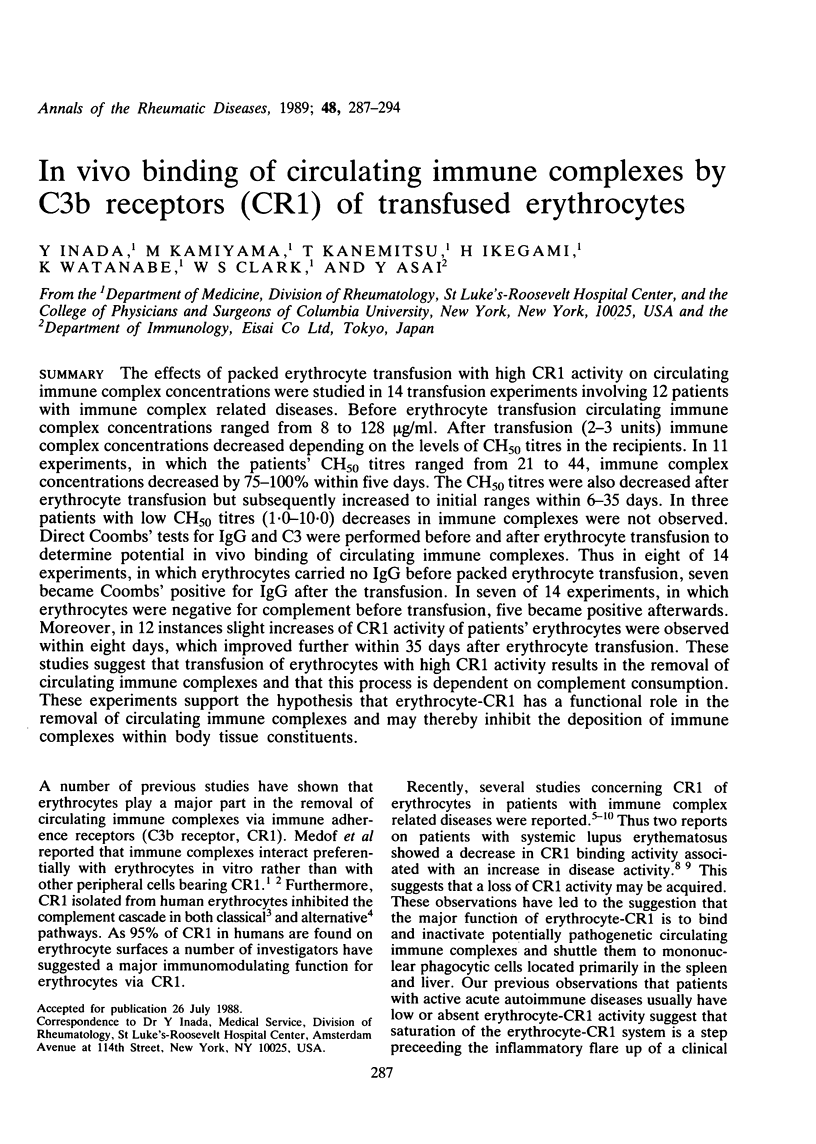
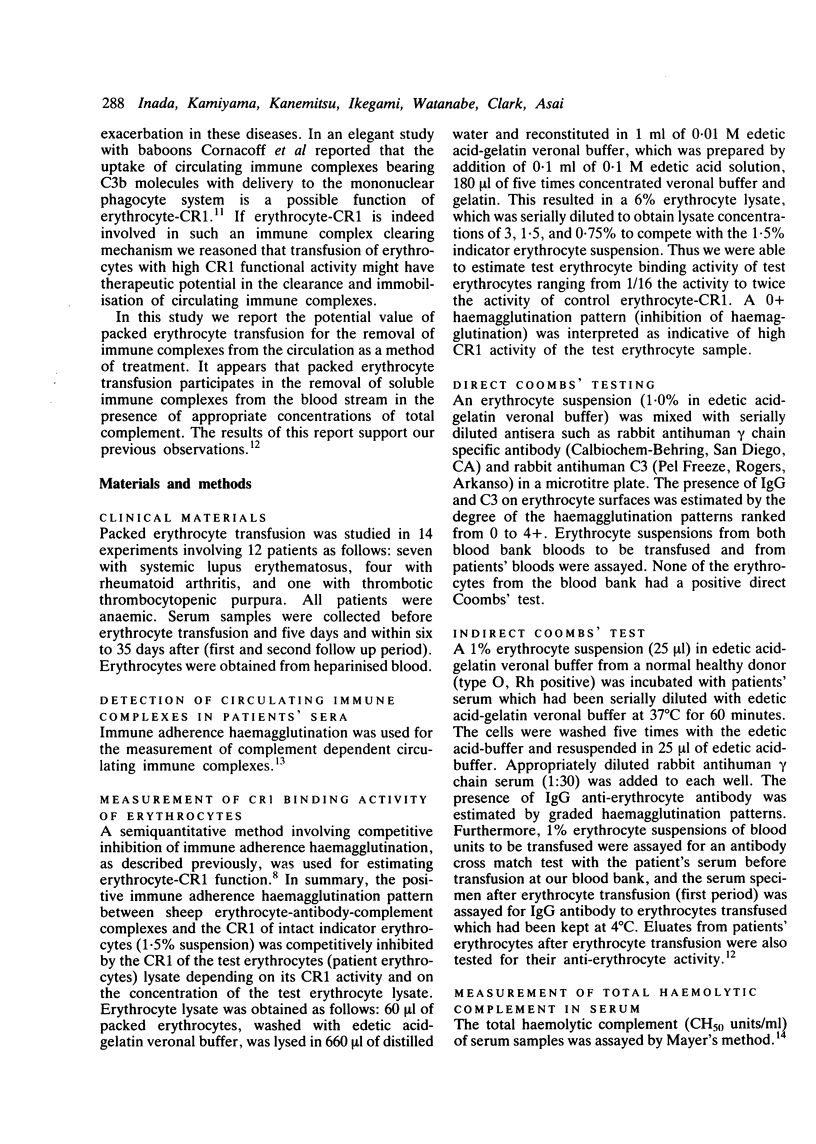
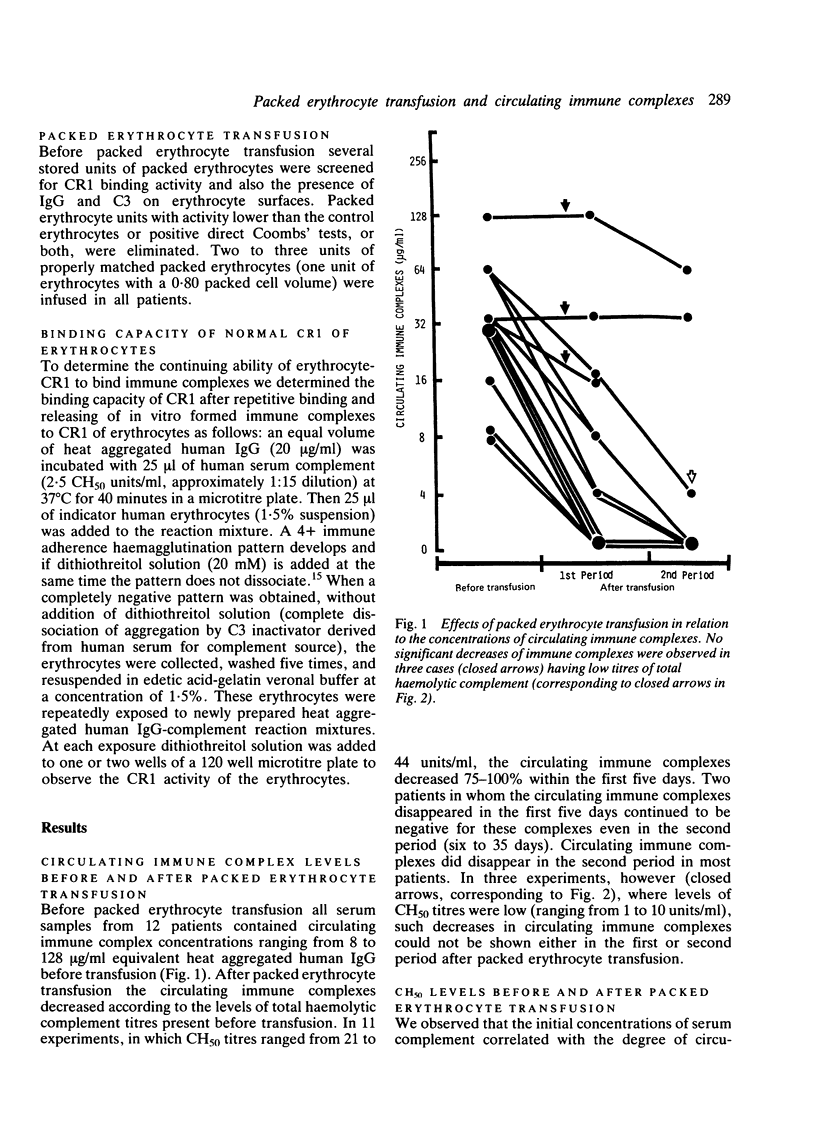
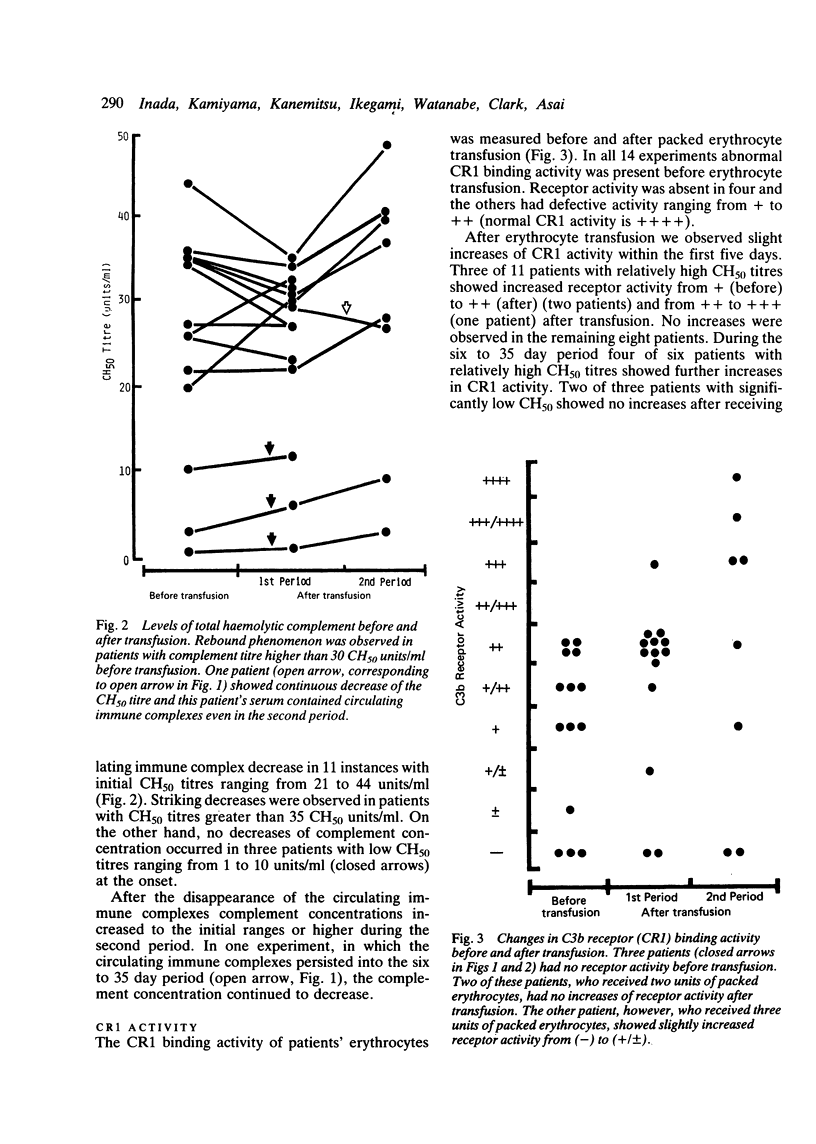
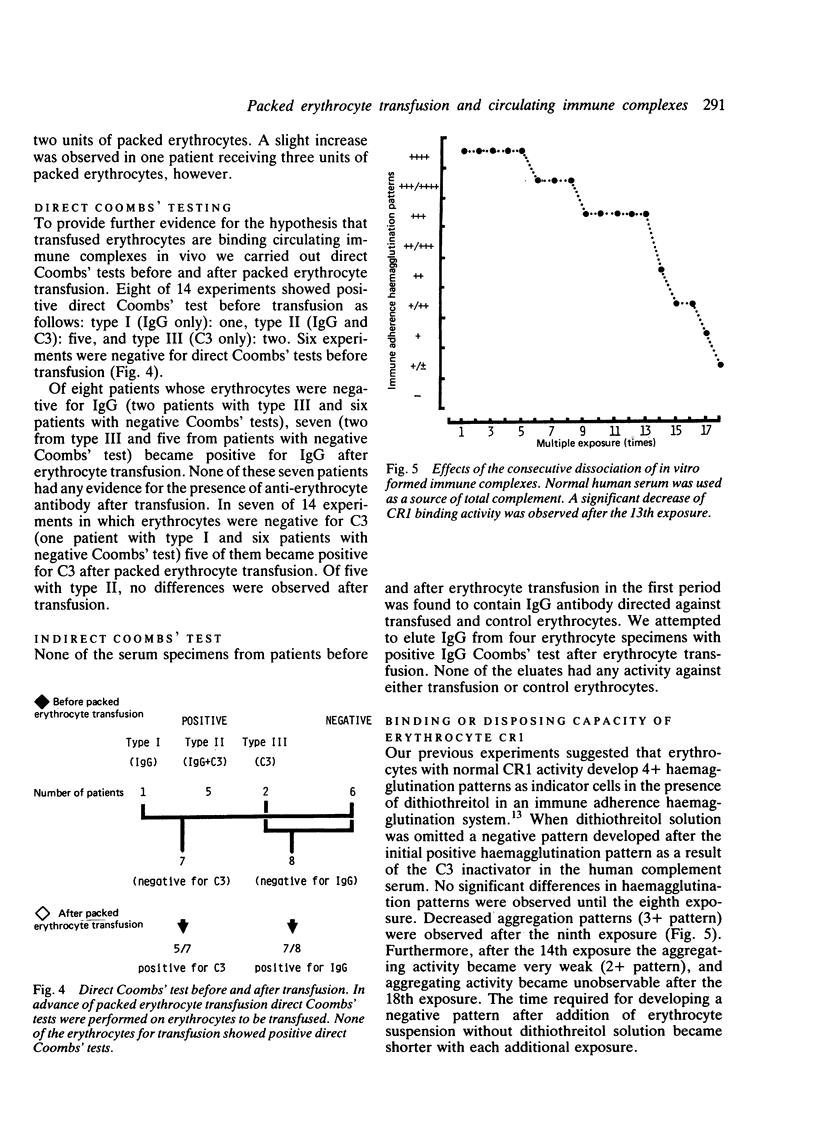
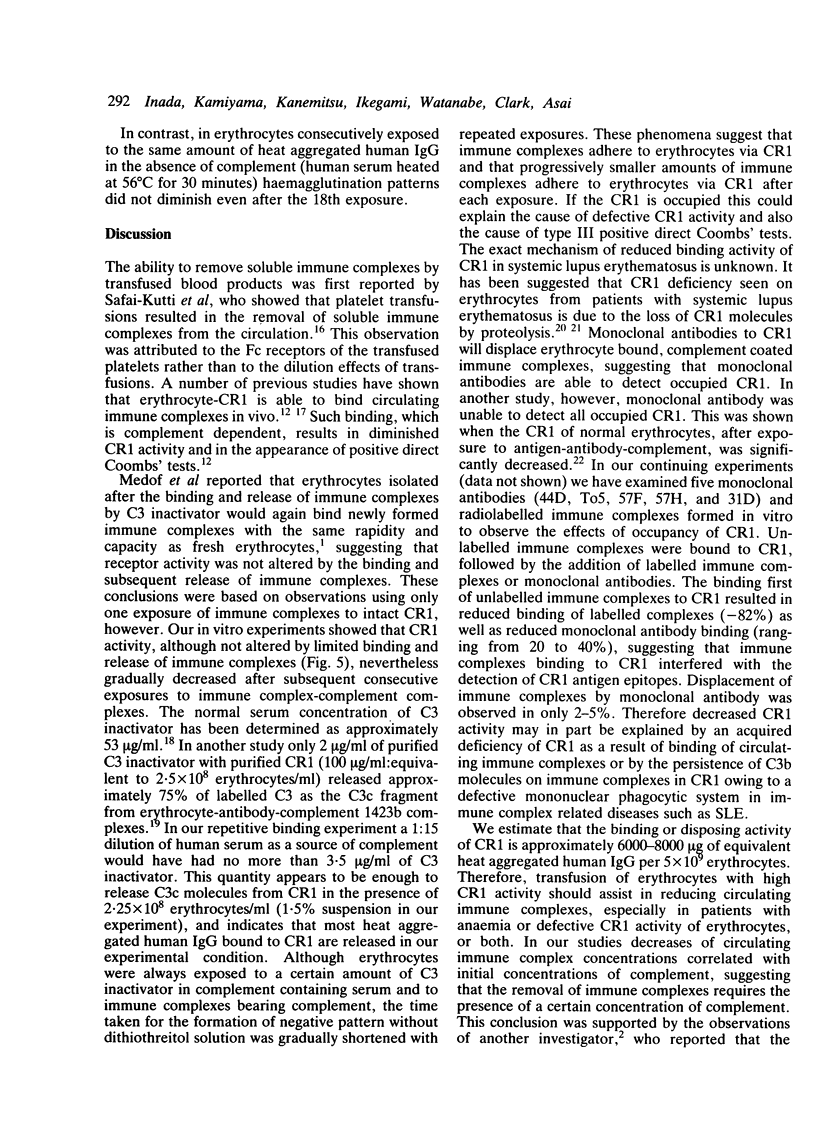
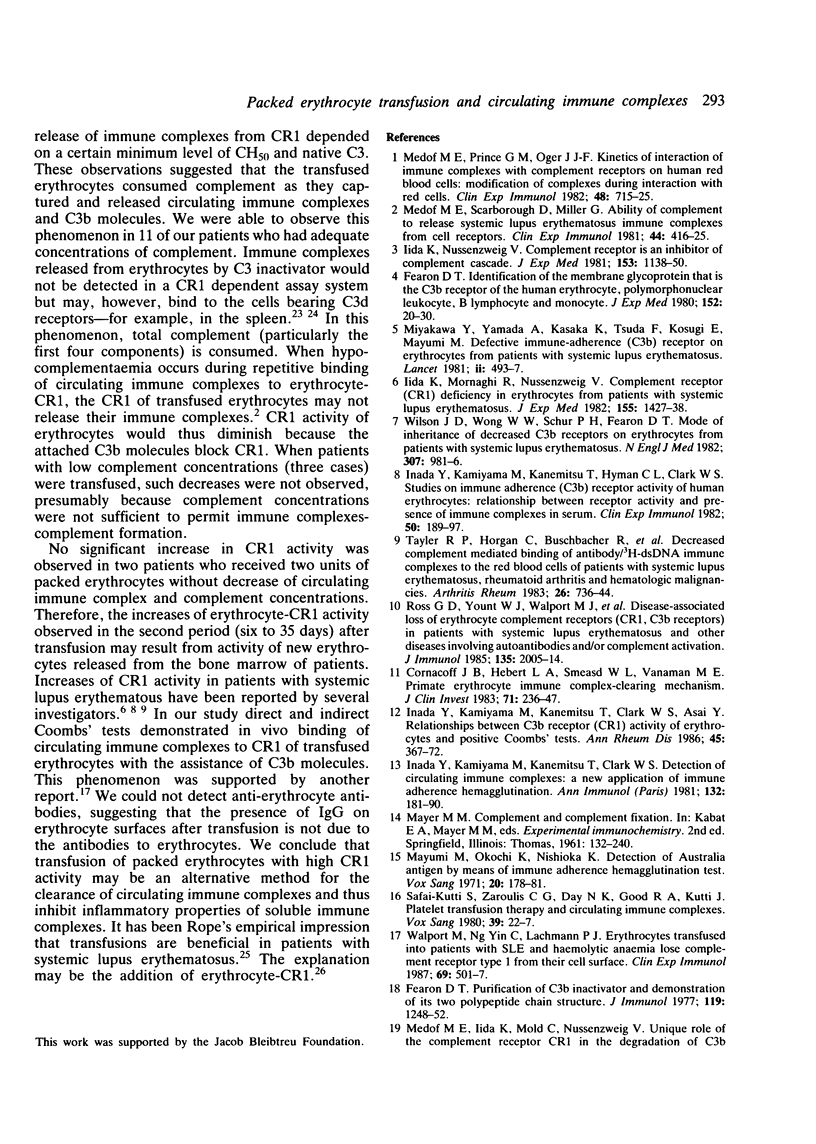
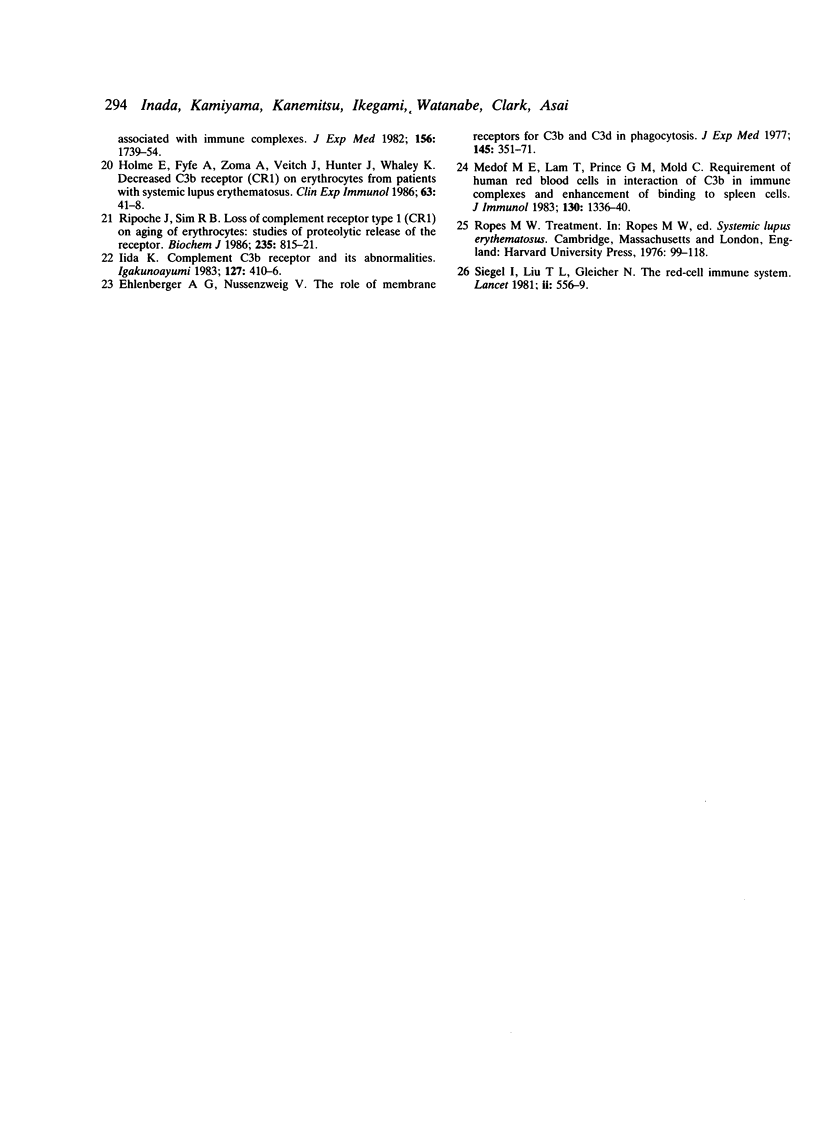
Selected References
These references are in PubMed. This may not be the complete list of references from this article.
- Fearon D. T. Identification of the membrane glycoprotein that is the C3b receptor of the human erythrocyte, polymorphonuclear leukocyte, B lymphocyte, and monocyte. J Exp Med. 1980 Jul 1;152(1):20–30. doi: 10.1084/jem.152.1.20. [DOI] [PMC free article] [PubMed] [Google Scholar]
- Fearon D. T. Purification of C3b inactivator and demonstration of its two polypeptide chain structure. J Immunol. 1977 Oct;119(4):1248–1252. [PubMed] [Google Scholar]
- Holme E., Fyfe A., Zoma A., Veitch J., Hunter J., Whaley K. Decreased C3b receptors (CR1) on erythrocytes from patients with systemic lupus erythematosus. Clin Exp Immunol. 1986 Jan;63(1):41–48. [PMC free article] [PubMed] [Google Scholar]
- Iida K., Mornaghi R., Nussenzweig V. Complement receptor (CR1) deficiency in erythrocytes from patients with systemic lupus erythematosus. J Exp Med. 1982 May 1;155(5):1427–1438. doi: 10.1084/jem.155.5.1427. [DOI] [PMC free article] [PubMed] [Google Scholar]
- Iida K., Nussenzweig V. Complement receptor is an inhibitor of the complement cascade. J Exp Med. 1981 May 1;153(5):1138–1150. doi: 10.1084/jem.153.5.1138. [DOI] [PMC free article] [PubMed] [Google Scholar]
- Inada Y., Kamiyama M., Kanemitsu T., Clark W. S., Asai Y. Relationships between C3b receptor (CR1) activity of erythrocytes and positive Coombs' tests. Ann Rheum Dis. 1986 May;45(5):367–372. doi: 10.1136/ard.45.5.367. [DOI] [PMC free article] [PubMed] [Google Scholar]
- Inada Y., Kamiyama M., Kanemitsu T., Clark W. S. Detection of circulating immune complexes: a new application of immune adherence haemagglutination. Ann Immunol (Paris) 1981 Mar-Apr;132C(2):181–190. doi: 10.1016/0769-2625(81)90026-x. [DOI] [PubMed] [Google Scholar]
- Inada Y., Kamiyama M., Kanemitsu T., Hyman C. L., Clark W. S. Studies on immune adherence (C3b) receptor activity of human erythrocytes: relationship between receptor activity and presence of immune complexes in serum. Clin Exp Immunol. 1982 Oct;50(1):189–197. [PMC free article] [PubMed] [Google Scholar]
- Mayumi M., Okochi K., Nishioka K. Detection of Australia antigen by means of immune adherence haemagglutination test. Vox Sang. 1971 Feb;20(2):178–181. doi: 10.1111/j.1423-0410.1971.tb00549.x. [DOI] [PubMed] [Google Scholar]
- Medof M. E., Iida K., Mold C., Nussenzweig V. Unique role of the complement receptor CR1 in the degradation of C3b associated with immune complexes. J Exp Med. 1982 Dec 1;156(6):1739–1754. doi: 10.1084/jem.156.6.1739. [DOI] [PMC free article] [PubMed] [Google Scholar]
- Medof M. E., Lam T., Prince G. M., Mold C. Requirement for human red blood cells in inactivation of C3b in immune complexes and enhancement of binding to spleen cells. J Immunol. 1983 Mar;130(3):1336–1340. [PubMed] [Google Scholar]
- Medof M. E., Prince G. M., Oger J. J. Kinetics of interaction of immune complexes with complement receptors on human blood cells: modification of complexes during interaction with red cells. Clin Exp Immunol. 1982 Jun;48(3):715–725. [PMC free article] [PubMed] [Google Scholar]
- Medof M. E., Scarborough D., Miller G. Ability of complement to release systemic lupus erythematosus immune complexes from cell receptors. Clin Exp Immunol. 1981 May;44(2):416–425. [PMC free article] [PubMed] [Google Scholar]
- Miyakawa Y., Yamada A., Kosaka K., Tsuda F., Kosugi E., Mayumi M. Defective immune-adherence (C3b) receptor on erythrocytes from patients with systemic lupus erythematosus. Lancet. 1981 Sep 5;2(8245):493–497. doi: 10.1016/s0140-6736(81)90882-5. [DOI] [PubMed] [Google Scholar]
- Ripoche J., Sim R. B. Loss of complement receptor type 1 (CR1) on ageing of erythrocytes. Studies of proteolytic release of the receptor. Biochem J. 1986 May 1;235(3):815–821. doi: 10.1042/bj2350815. [DOI] [PMC free article] [PubMed] [Google Scholar]
- Ross G. D., Yount W. J., Walport M. J., Winfield J. B., Parker C. J., Fuller C. R., Taylor R. P., Myones B. L., Lachmann P. J. Disease-associated loss of erythrocyte complement receptors (CR1, C3b receptors) in patients with systemic lupus erythematosus and other diseases involving autoantibodies and/or complement activation. J Immunol. 1985 Sep;135(3):2005–2014. [PubMed] [Google Scholar]
- Safai-Kutti S., Zaroulis C. G., Day N. K., Good R. A., Kutti J. Platelet transfusion therapy and circulating immune complexes. Vox Sang. 1980 Jul;39(1):22–27. doi: 10.1111/j.1423-0410.1980.tb01833.x. [DOI] [PubMed] [Google Scholar]
- Siegel I., Liu T. L., Gleicher N. The red-cell immune system. Lancet. 1981 Sep 12;2(8246):556–559. doi: 10.1016/s0140-6736(81)90941-7. [DOI] [PubMed] [Google Scholar]
- Taylor R. P., Horgan C., Buschbacher R., Brunner C. M., Hess C. E., O'Brien W. M., Wanebo H. J. Decreased complement mediated binding of antibody/3H-dsDNA immune complexes to the red blood cells of patients with systemic lupus erythematosus, rheumatoid arthritis, and hematologic malignancies. Arthritis Rheum. 1983 Jun;26(6):736–744. doi: 10.1002/art.1780260606. [DOI] [PubMed] [Google Scholar]
- Walport M., Ng Y. C., Lachmann P. J. Erythrocytes transfused into patients with SLE and haemolytic anaemia lose complement receptor type 1 from their cell surface. Clin Exp Immunol. 1987 Sep;69(3):501–507. [PMC free article] [PubMed] [Google Scholar]
- Wilson J. G., Wong W. W., Schur P. H., Fearon D. T. Mode of inheritance of decreased C3b receptors on erythrocytes of patients with systemic lupus erythematosus. N Engl J Med. 1982 Oct 14;307(16):981–986. doi: 10.1056/NEJM198210143071604. [DOI] [PubMed] [Google Scholar]


